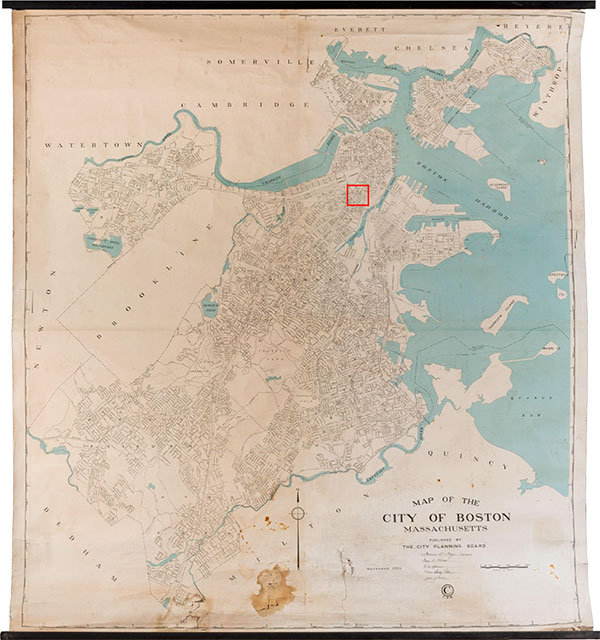 Figure 1. Map of the City of Boston Massachusetts (1926), published by The City Planning Board November, 1926. Inset in red is depicted on page 20.
1There is no shortage of maps of Boston, from Captain John Bonner's 1722 colonial era The Town of Boston in New England2, to John G. Hales 1819 Map of Boston and Its Vicinity From Actual Survey3 and forty years later, to Henry F. Walling's 1859 "Map of Boston and Its Vicinity From Actual Surveys Under the Direction of H.F. Walling, Superintendent of the State Map. 1859"4, a large scale wall map that is a comprehensive geographic and urban map of Boston based on land surveys and coastal charts that presents an image of the city, Boston Harbor waters, Boston Light and Boston's numerous harbor islands that from first settlement by Native Americans have together comprised the identity and virtues of this locale. The map genres that represent Boston are also numerous: Boston Directory street maps of 1789 through 19435; Geo. Walker Lithography Co.'s colorful bird's eye views of Boston Harbor (c.1923)6 and Central Boston with the Boston Elevated (1930)7; U.S. Coast and Geodetic Survey charts of the harbor and approaches (19th-20th-century.); aerial photography 19th - 20th-century; and 20th-century pictorial tourist maps to name a few. Iconic 18th-century Colonial elevated print views of Boston harbor drawn by English artists and Colonists such as Paul Revere, with text identifying the array of Colonial Boston's wharves and piers, the harbor islands, and some building spires identify Boston as its harbor profile seen from an Atlantic Ocean approach.8 Boston's 19th-century identity as Boston Harbor seen from across the water is painted at large scale in J.W. Hill's 1853 watercolor view "Boston" that by 1857 was an internationally published engraved view.9 We must remember that three centuries of displacement removed the original Native American settlers of this peninsula, harbor, harbor islands, and rich inland territory in order to establish the town of "Boston" in these views.
Figure 1. Map of the City of Boston Massachusetts (1926), published by The City Planning Board November, 1926. Inset in red is depicted on page 20.
1There is no shortage of maps of Boston, from Captain John Bonner's 1722 colonial era The Town of Boston in New England2, to John G. Hales 1819 Map of Boston and Its Vicinity From Actual Survey3 and forty years later, to Henry F. Walling's 1859 "Map of Boston and Its Vicinity From Actual Surveys Under the Direction of H.F. Walling, Superintendent of the State Map. 1859"4, a large scale wall map that is a comprehensive geographic and urban map of Boston based on land surveys and coastal charts that presents an image of the city, Boston Harbor waters, Boston Light and Boston's numerous harbor islands that from first settlement by Native Americans have together comprised the identity and virtues of this locale. The map genres that represent Boston are also numerous: Boston Directory street maps of 1789 through 19435; Geo. Walker Lithography Co.'s colorful bird's eye views of Boston Harbor (c.1923)6 and Central Boston with the Boston Elevated (1930)7; U.S. Coast and Geodetic Survey charts of the harbor and approaches (19th-20th-century.); aerial photography 19th - 20th-century; and 20th-century pictorial tourist maps to name a few. Iconic 18th-century Colonial elevated print views of Boston harbor drawn by English artists and Colonists such as Paul Revere, with text identifying the array of Colonial Boston's wharves and piers, the harbor islands, and some building spires identify Boston as its harbor profile seen from an Atlantic Ocean approach.8 Boston's 19th-century identity as Boston Harbor seen from across the water is painted at large scale in J.W. Hill's 1853 watercolor view "Boston" that by 1857 was an internationally published engraved view.9 We must remember that three centuries of displacement removed the original Native American settlers of this peninsula, harbor, harbor islands, and rich inland territory in order to establish the town of "Boston" in these views.
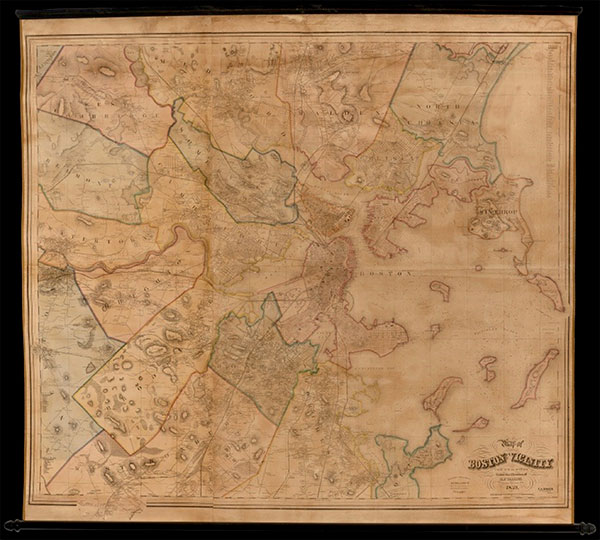 Figure 2. Map of Boston and Its Vicinity From Actual Sur-veys Under the Direction of H.F. Walling, Superintendent of the State Map. 1859.
Figure 2. Map of Boston and Its Vicinity From Actual Sur-veys Under the Direction of H.F. Walling, Superintendent of the State Map. 1859.
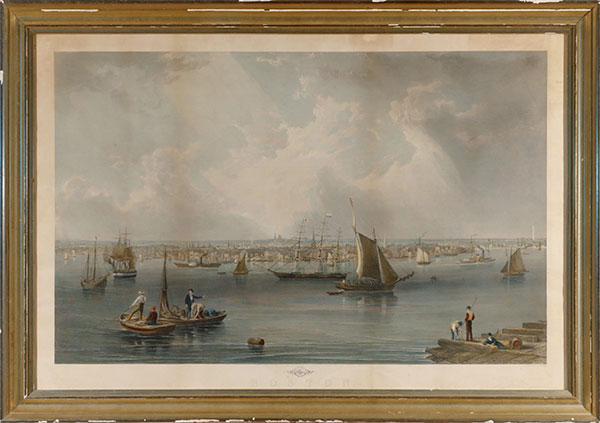 Figure 3. J.W. Hill engraving titled "Boston". New York: F. & G.W. Smith, 1857.
Figure 3. J.W. Hill engraving titled "Boston". New York: F. & G.W. Smith, 1857.
What more can we learn about Boston, and maps of Boston, from an examination of the Boston City Planning Board's surprisingly rare 1926 wall map10 Map of the City of Boston Massachusetts (the "1926 CPB Map ")? In many respects, this very large but plain map raises more questions than answers. We shall consider why this map is a new genre of map, the ideas about city identity and city growth it expresses, and the ongoing influence these 1926 ideas have had on the way in which local, state, and federal governments define and control land use in American cities and towns. The 1926 CPB Map is a Boston map of first impression, as Boston's zoning law and plan were only three years old when it was published, and yet the map embodies deeply entrenched American governmental and civil engineering ideas about a city's purpose, about whether to keep or discard the legacy of prior generations in that place and how public sector authority can and should structure the present.
The Boston City Planning Board's Annual Report for 1926 (the "1926 CPB Annual Report") explains that this map is the first municipal map published in the history of the city:
"During the past year, the Board has completed a new wall map of the City of Boston and has arranged for its publication on the scale of 800 feet to the inch, and also reduced to the scale of 1,600 feet to the inch. This is the first municipal map to be published in the history of the city and has been copyrighted in the name of the City Planning Board of the City of Boston... The preparation of this map was considered a necessary undertaking for the reason that the latest available 800-foot scale map of the City of Boston was published in 1915 and is accordingly of doubtful value so far as present-day conditions are concerned. ...Plans are being made to place one of these wall maps in each department of the city free of charge, together with a limited number of the smaller maps and...by sale through private agencies...the work which was undertaken primarily for the benefit of the City of Boston may be readily available for all of its citizens...."11 (emphasis added)
The Boston City Planning Board's 1926 decision to publish its wall map was made in the historic context of that year's landmark U.S. Supreme Court zoning decision Village of Euclid vs. Ambler Realty12 which held that a municipality has authority to regulate land uses by district for the public's "health, welfare, and safety." Municipal zoning had been taking root across the country sporadically since 1909. In 1926, prior to Euclid, the federal government, through the U.S. Department of Commerce, convened a board of commissioners who drafted and issued a model state zoning enabling act. In 1924, Massachusetts had already amended the Massachusetts state constitution with Article LX, enabling zoning legislation to regulate buildings "according to their use or construction to specified districts of cities or towns." Also in 1924, the legislature authorized the City of Boston to enact a "Comprehensive Zoning Ordinance." The choice of 1926 as the year for the City Planning Board to commit substantial resources to compile, print and publish its own "view" of Boston is no coincidence and is strengthened by the legal foundation established in Euclid.
What appears at first glance to be just a Boston street map is, by its content and absence of certain content, anything but. This map is the result of a paradigm shift both in the law and in city government, enabling the leap from 1914 when the City of Boston Planning Board was established—its scope originally limited to regulating building dimensions and height—to 1924 when Boston adopted its first zoning plan for land use, and, finally, to 1926 when the City Planning Board, with the wind of Euclid at its back, establishes the contours and premises of Boston's first comprehensive land use plan as driven by traffic studies and a proposed thoroughfare plan. The 1926 CPB Map is drawn from a deliberately municipal point of view by the City Planning Board and represents its definition and image of Boston. The 1926 CPB Map identifies only publicly owned land, primarily Boston's roads, and recognizes the public hierarchy of federal, state, and municipal land ownership.
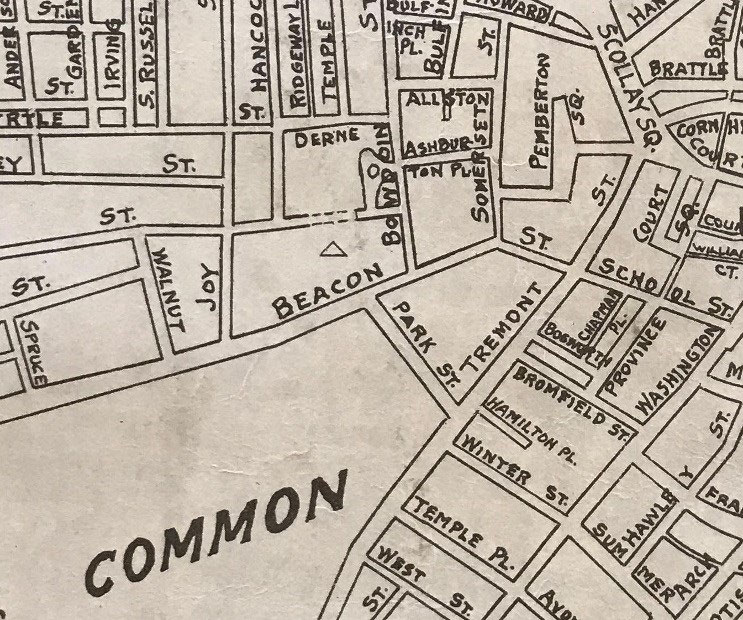 Figure 4. Draftsman’s triangle denoting the location of the State House. See Fig. 1, Map of the City of Boston Massachusetts (1926).
The 1926 CPB Map has graphic features made all the more apparent because of the large scale (1 inch equals 6.6 miles) and three-color scheme, blue, black and white. Municipalities abutting Boston are outlined in black and labeled, but those outlined areas are otherwise blank. Major rivers and water bodies are denoted in blue. The primary features labeled on the 1926 CPB Map are Boston's public streets, parks, squares, certain bridges, the U.S. Army-owned "Boston Airport" and bases, piers within the demarcated "U.S.Pierhead Line"13, close in harbor islands, and the Chestnut Hill Reservoir, Boston's drinking water supply.14 The map's local coordinates center the map on the Massachusetts State House at zero on the x and y-axis. A draftsman's small, unlabeled triangle marks the location of the State House on the map. (Fig. 4, next page) These are the "present day conditions" of the CPB 1926 Annual Report.
Figure 4. Draftsman’s triangle denoting the location of the State House. See Fig. 1, Map of the City of Boston Massachusetts (1926).
The 1926 CPB Map has graphic features made all the more apparent because of the large scale (1 inch equals 6.6 miles) and three-color scheme, blue, black and white. Municipalities abutting Boston are outlined in black and labeled, but those outlined areas are otherwise blank. Major rivers and water bodies are denoted in blue. The primary features labeled on the 1926 CPB Map are Boston's public streets, parks, squares, certain bridges, the U.S. Army-owned "Boston Airport" and bases, piers within the demarcated "U.S.Pierhead Line"13, close in harbor islands, and the Chestnut Hill Reservoir, Boston's drinking water supply.14 The map's local coordinates center the map on the Massachusetts State House at zero on the x and y-axis. A draftsman's small, unlabeled triangle marks the location of the State House on the map. (Fig. 4, next page) These are the "present day conditions" of the CPB 1926 Annual Report.
The title block of this map signals a new genre of map. Under the map title "Map of the City of Boston" and "Published by The City Planning Board" are the five printed facsimile signatures of the planning board members that are the lawful act approving and ratifying the map. No map surveyor or draftsman's name, the typical professional credentials attesting to a map's legitimacy, are to be found. Finally, below the City Planning Board member signatures is a large circle framing "CPB," the novel copyright notice—on the face of the map, above the neat line as a logo! Although this map bears the legend "November 1926," in other respects, the 1926 CPB Map is graphically ahistorical.
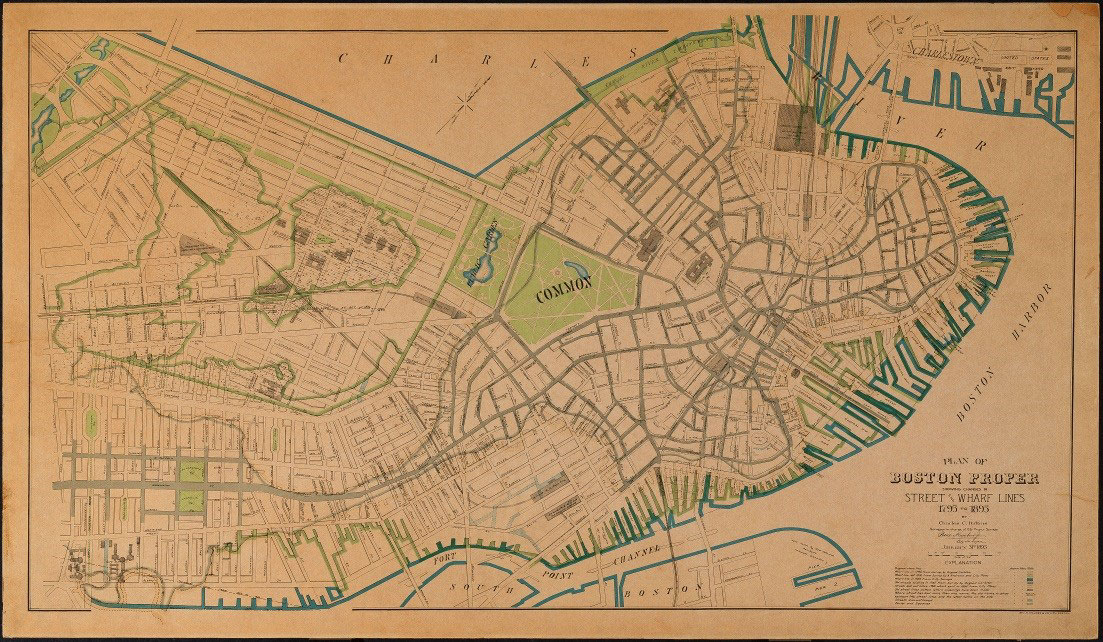 Figure 5. Plan of Boston Proper Showing Changes in Street And Wharf Lines 1795 To 1895 by Charles C. Perkins Surveyor
What map features are absent from the 1926 CPB Map? No private land ownership is denoted either as lots, or building footprints or by name—individual or institutional, historic or current. No structures are represented or identified. Not even the Massachusetts Statehouse is identified graphically or by name. No monuments, memorials, religious buildings, schools, hospitals, police or fire stations, farms, in fact, no landmarks of any kind evincing human habitation or history are identified. Map color, historically green, is absent as an identifier of parks or landscape. The Boston Common, Boston Public Garden, and the Boston Arboretum are outlined and labeled but lack any interior details. Forest Hills Cemetery and historic burial grounds are not labeled. No topographic features are indicated graphically or with text. No Boston Harbor fill lines, a major source of Boston's terra firma, are shown on the map.15 (Fig. 5) There is no map key because there are no graphic symbols.
Figure 5. Plan of Boston Proper Showing Changes in Street And Wharf Lines 1795 To 1895 by Charles C. Perkins Surveyor
What map features are absent from the 1926 CPB Map? No private land ownership is denoted either as lots, or building footprints or by name—individual or institutional, historic or current. No structures are represented or identified. Not even the Massachusetts Statehouse is identified graphically or by name. No monuments, memorials, religious buildings, schools, hospitals, police or fire stations, farms, in fact, no landmarks of any kind evincing human habitation or history are identified. Map color, historically green, is absent as an identifier of parks or landscape. The Boston Common, Boston Public Garden, and the Boston Arboretum are outlined and labeled but lack any interior details. Forest Hills Cemetery and historic burial grounds are not labeled. No topographic features are indicated graphically or with text. No Boston Harbor fill lines, a major source of Boston's terra firma, are shown on the map.15 (Fig. 5) There is no map key because there are no graphic symbols.
Also missing from this map are the 19th and early 20th-century streetcar and subway lines that created Boston's streetcar suburbs.16 The dense networks of streets in Dorchester, Roxbury, Brighton, and East Boston cartographically lack any explanation. The street networks are not explainable by the interstate trains running from North and South Stations. No sewer structures, bus lines, ferry terminals, or tunnels are shown. Despite all of these missing city and civic features, the 1926 CPB Map is titled "The City of Boston" and begs the question: how does the City Planning Board define or explain the city dynamically, functionally, historically, and for the future? The City Planning Board intended that its staff and Boston city departments hang this working map in their respective offices to use as the official map for making policy decisions and appropriating city funds. Why?
Hiding in plain sight is that the 1926 CPB Map expresses the 1926 structure of the City of Boston government, rather than the structure of Boston as a 300-year-old city. As of 1926, the new zoning and comprehensive land use planning authority legally vested in the City Planning Board placed the Board near the top of City Hall's bureaucratic hierarchy.
Despite the jurisdiction of Boston's other city commissions, such as transportation, Boston harbor, or the sewer system, the 1926 CPB Map represents a political coup of sorts, the Board positioning itself as an umbrella authority organizing all other city commissions.
The 1926 CPB Map, notwithstanding its title as a city map, is a graphic projection of Boston's municipal agenda. The 1926 CPB Map reaffirms that the city is the road builder who can take private property by eminent domain, heir to those original powers in the 1692-93 Province Laws. The 1926 CPB Report features traffic studies addressing the new phenomenon of car traffic in and through the downtown that read like 21st-century planning board minutes. New road design is driven by the concept of wide "thoroughfares" to guide heavy traffic around the city. Road widening by taking land and buildings for demolition are priorities. The specific example to illustrate a taking for demolition and road widening is Pike's Alley, a well-used pedestrian alley owned by a synagogue in the West End described as a hindrance to the city's agenda of interconnecting all city streets for the benefit of automobile flow. The 1926 CPB Report praises the Board for applying the new law "with 'very little friction' to a city where habits have become crystallized over a period of nearly three centuries (that) speaks well not only for the efficiency of the plan itself but for the public spirit of the citizens when called upon to accept comprehensive regulations in the interests of the health, safety, morals, and welfare of the people." Did the public voice have a forum?
The City Planning Board's reliance on the 1926 CPB Map to prepare the city's first comprehensive land use plan guaranteed that the parameters of that plan would omit the features which did not appear in the 1926 CPB Map. The demolitions by authority of the City Planning Board of Boston's 17th, 18th, and 19th-century places and buildings, as illustrated in Lost Boston1718, have persisted throughout the 20th century fed by the same ideas as those expressed by the 1926 CPB Map. In 1960, when the Boston City Planning Board was abolished and replaced by the Boston Redevelopment Authority, the unleashing of these political powers reached full flower, and demolition of the city began in earnest. Just as in 1926, neighborhoods with the least political influence were removed, and public investments served a preferred set of constituents.
The 1926 CPB Map coordinates center the map on the Massachusetts State House. One practical advantage of this system is that a geographically decentralized Boston can be drawn at the desired large scale with a minimum of the map sheet used for Boston Harbor. Just as likely, this centering of the map on the Massachusetts seat of government expresses a political feedback loop to the City Planning Board itself. The image and identity of Boston on the 1926 CPB Map are political.
Today's Boston is a product of the philosophy underlying the 1926 CPB Map. The 1926 CPB Map represents the genre of planning maps that express city planning as a science. The myth of science as being value-neutral guides the graphics in the 1926 CPB Map, the 1926 City Planning Board annual report, and the Board's rationale for land takings as its primary urban planning activity. In 1926, and certainly prior, American and other urban planning philosophies19 encouraged and embraced 18th, 19th, 20th-century images of a city, because cumulatively they reveal the complexity and many facets of city life, the organic growth of the city, and the many hands that formed the identity of a city.
- 1. Map of the City of Boston, City of Boston Planning Board, publisher, Boston 1926. two-color print on four joined sheets, linen-backed, on wood rods, dimensions: 7 ' x 6.3'.
- 2. Colonial Society Volume.46, John W. Reps, Boston by Bostonians: The Printed Plans and Views of the Colonial City by its Artists, Cartographers, Engravers, and Publishers - Colonial Society of Massachusetts
- 3. Map of Boston and Its Vicinity from Actual Survey., John G. Hales, Proprietor and Publisher, 1819
- 4. Map of Boston and Its Vicinity From Actual Surveys Under the Direction of H.F. Walling, Superintendent of the State Map. 1859.
- 5. The Boston Directory The Boston Directory, 1789 to 1900. -
- 6. Boston Harbor, c.1923, Geo. H. Walker & Co., Boston Harbor - Norman B. Leventhal Map & Education Center
- 7. The Central Part of Boston, Massachusetts, showing transportation lines of the Boston Elevated Railway, Walker Lith. & Pub. Co., Boston, copyright Boston Elevated, 1930, artist Richard F. Lufkin
- 8. Id. at Colonial Society Volume.46.
- 9. "Boston" after J.W. Hill, engraved by C. Mottram, printed by McQueen, London c.1857
- 10. I have located no published record of the 1926 CPB Map in the City of Boston Archives or elsewhere.
- 11. Thirteenth Annual Report of the City Planning Board for the Year Ending Dec. 31, 1926.
- 12. Village of Euclid vs. Ambler Realty Co., 1926, 272 U.S.365(1926) VILLAGE OF EUCLID, OHIO, et al. v. AMBLER REALTY CO. | Supreme Court | U.S. Law | LII / Legal Information Institute The Court's dictum is that the immutability of Constitutional principles is consistent with the court's consideration of new sets of facts and circumstances that the future presents to make new law.
- 13. the U.S. Pierhead Line marks the federal boundary and jurisdiction over "...waters subject to the ebb and flow of the tide...." as established by the federal Rivers and Harbors Act of 1899.
- 14. Boston's 1926 drinking water supply source was Natick and Framingham, Massachusetts' Lake Cochituate. Chestnut Hill Reservoir stored water exclusively for Boston's use. The reservoir grounds were a public park designed by Frederick Law Olmstead and conceived as part of Boston's emerald necklace to which it connects via Beacon Street through Brookline (omitted on the 1926 CPB Map.)
- 15. Plan of Boston Proper Showing Changes in Street And Wharf Lines 1795 To 1895 by Charles C. Perkins Surveyor in Charge of City Proper Surveys, Pierre Humbert, Jr. City Surveyor, Jan. 31 1895, Geo. H. Walker & Co., Lith. Boston.
- 16. The Growth of Boston Rapid Transit - Boston Streetcars These dense neighborhood street grids are a proxy for enormous population growth in those neighborhoods from 1870 to 1926. The 1870 census counted 12,000 Dorchester inhabitants. In 1920 the count was 200,000 in Dorchester alone, a rate of growth mirrored in the other streetcar suburbs.
- 17. See George Walker Lith.& Co.'s 1930 pictorial map of the Boston Elevated lines. See Endnote 7.
- 18. Jane Holtz Kay, Lost Boston, Houghton Mifflin Company, Boston, 1980.
- 19. Jane Jacobs, a Canadian urban planning writer in 1961, condemns the wrecking ball and highrise version of urban planning sweeping America in her classic text Death and Life of Great American Cities, in which she champions the originality and chaos, history and culture, and the organic growth of cities. Kevin Lynch, author of The Image of the City, MIT Press, Cambridge, 1960, defines a planning process requiring an understanding of the image of the city.
